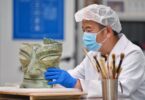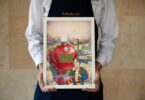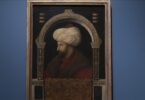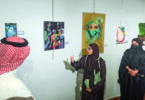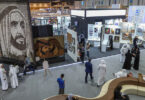TAREQ AL-THAQAFI
MAKKAH: Jassem Al-Busandah, a Saudi artist in his forties, travels back in time by designing creative models of buildings highlighting the ancient Saudi lifestyle, shedding light on multiple aspects of the Kingdom’s historic makeup.
The artist started his career in Al-Ahsa, and aims to go international to share the diversity of Saudi culture.
“It was at the primary stage when my artistic personality first appeared, namely in the art education class, which I enjoyed the most. It was full of beauty, colors, and artistic pieces. I was excited to begin this journey, full of passion and challenges,” Al-Busandah told Arab News.
“At the very early stage, I realized that I was attracted to this field as soon as I laid my eyes on the colored modelling material (plasticine). Whenever I went with my parents to the beach, I seized the opportunity to model clay and build house models, and used tree leaves for decoration.”
Whenever Al-Busandah was at home, he used cardboard to build houses. He was greatly encouraged by his family, who saw his artistic talent growing daily as he practiced.
“I have developed my hobby with time, and I started using pressed wood, gypsum, and clay,” he said.
“The models I formed go through different stages, mainly the old mud houses. First, I detail the house from an artistic point of view, then I cover it with burlap (a type of fabric). I mix white cement with gypsum to be added to the model, then I leave it (in the sun) for several hours. After drying, I add colors and effects to the model, which comes out vivid and full of fine details.”
According to Al-Busandah, he has been able to convey the philosophy of the simple ancient Saudi lifestyle, or “the good old days,” where Saudis lived in one neighborhood and were brought together by familiarity, love, solidarity, and mutual reinforcement.
“Saudis in the past worried about each other, and used to share their happy moments, occasions, and celebrations. In my mission, I document a contemporary artistic era, which I wanted to introduce to this generation, so it stays attached to its ancient roots, and to show how the Saudi man relied on himself in building a proper house. This legacy had to be preserved,” he added.
The artist has a museum in Al-Ahsa, where students and tourists learn about the heritage of the Kingdom in general and of Al-Ahsa in particular.
“The most prominent artistic models I have formed are the Masmak Fortress, the Sahood Fort, the Ibrahim Palace, and the famous and popular Qaisariah Souq,” he said.
“I feel extremely happy whenever I witness the reaction of the museum’s visitors, namely Saudis who come from different regions of the Kingdom. Some of them break into tears when they see their past embodied, while others express their close relation to this era comprising their birth, childhood, and early youth stage,” he added.
“I have translated this cultural momentum into an incubating and attractive cultural environment with which many Saudis find their relations with the most prominent life events they have lived.
“My artistic experience is inspired by my view of these old and popular models and houses, as I try to build a miniature city consisting of these houses lined up next to each other to present this attracting architectural pattern with a different print,” he added.
He added that he wants to open an international exhibition showcasing the different landmarks of the Kingdom, where foreign visitors can find what they are looking for and be introduced to the rich cultural diversity of the Kingdom.


